The implants from the Alians Elbow S range are intended for the fixation of fractures and osteotomies of the distal humerus and proximal ulna in adults.
The treatment of elbow fractures represents a true challenge, mainly due to the anatomical complexity of the region and the presence of surrounding soft tissues. The most frequent causes of these fractures include falls in elderly osteoporotic patients and high-energy trauma in younger patients.
Intra-articular fractures require stable articular reconstruction, which can be particularly complex in osteoporotic patients. In recent years, reduction using double plating (parallel 180° or perpendicular 90° configuration) has become the treatment of choice for distal humerus fracture reduction, providing simultaneous support to both the medial and lateral columns. The latest generations of anatomically contoured locking plates improve primary stability and offer better control of reduction, facilitating early return to activity.
For the reduction of extra-articular fractures, so-called “Y” plates constitute an alternative to double plating, while ensuring stabilization of both columns.
The treatment of olecranon fractures also requires stable anatomical reduction, with respect for soft tissues and preservation of the extensor mechanism to allow for early mobilization. These fractures may be simple or complex, isolated, or associated with a distal humerus fracture.
Optimize the management of elbow fractures and osteotomies with a comprehensive range of plates.
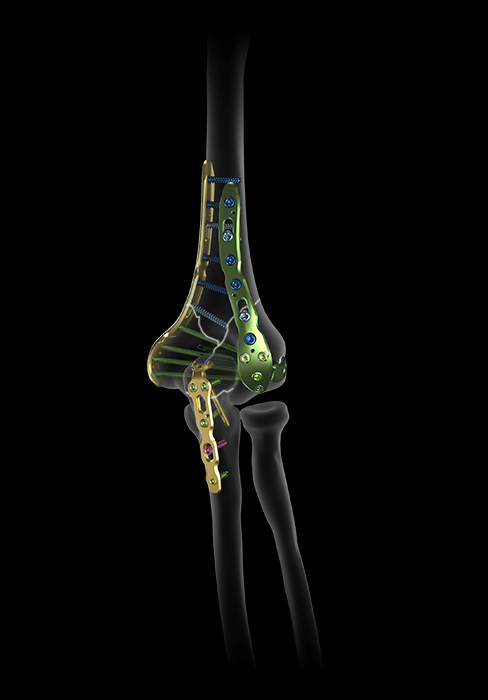
To address intra-articular fractures with a perpendicular (90°) configuration, combine:
Medial plate (symmetric, 4 sizes):
• Medial positioning
• Medio-lateral orientation of distal screws
Postero-lateral plate (asymmetric, 5 sizes)
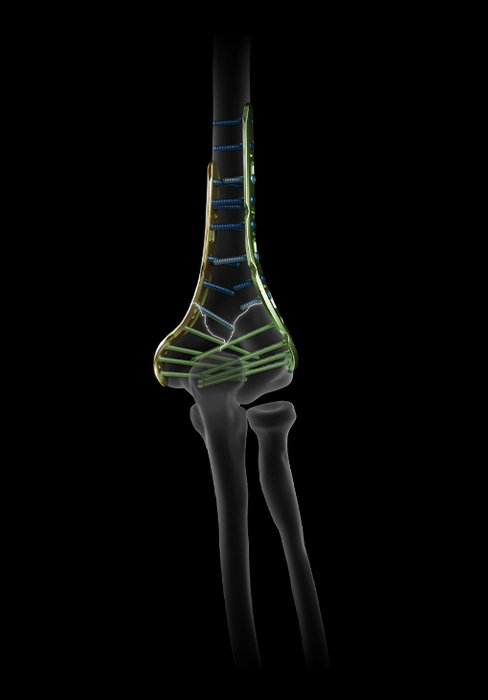
To address intra-articular fractures with a parallel (180°) configuration, combine:
Medial plate (symmetrical, 4 sizes)
-
Medial positioning
-
Ensures medio-lateral orientation of distal screws
Lateral plate (asymmetrical, 5 sizes)
-
Lateral positioning
-
Latero-medial orientation of distal screws
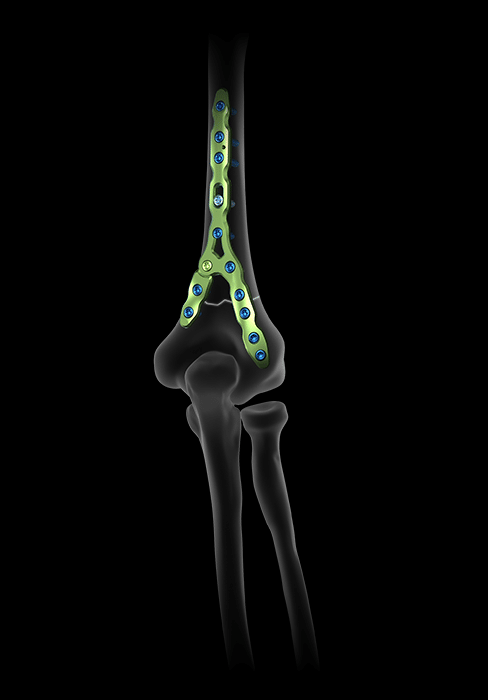
The Y plates from our Alians Elbow S range have been designed to address supracondylar (or extra-articular) fractures while maintaining support of the medial and lateral columns. The distal medial branch is removable if required by the patient’s anatomy.
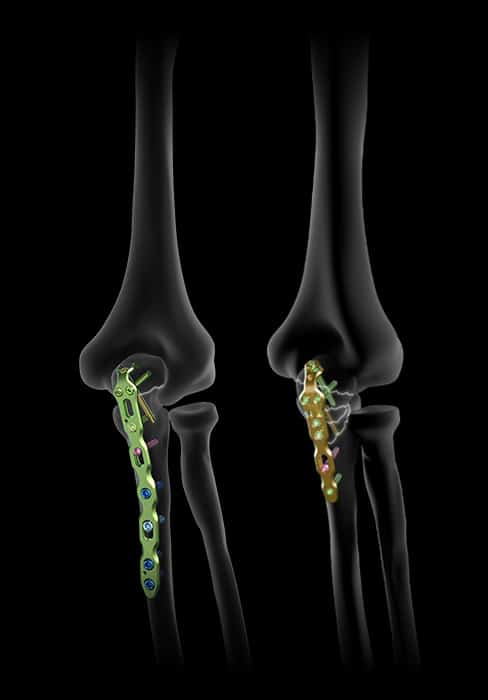
The Alians Elbow S range also includes various plates designed to treat simple and complex olecranon fractures:
Standard fracture plates (asymmetrical, 3 sizes & symmetrical, 1 size)
-
Two hooks inserted into the olecranon mass to facilitate fracture reduction and improve stability by limiting stress on the triceps tendon
-
A transfixing screw oriented toward the base of the coronoid and passing through the fracture site to improve construct stability and create compression
Complex fracture plates (asymmetrical, 1 size & symmetrical, 1 size)
-
“Buttress” effect provided by the plate extension along the olecranon tip (no hooks)
-
Two polyaxial pegs on the distal end of the plate to reach extra-proximal fragments at the olecranon tip
-
A transfixing screw oriented toward the base of the coronoid and passing through the fracture site to improve construct stability and create compression
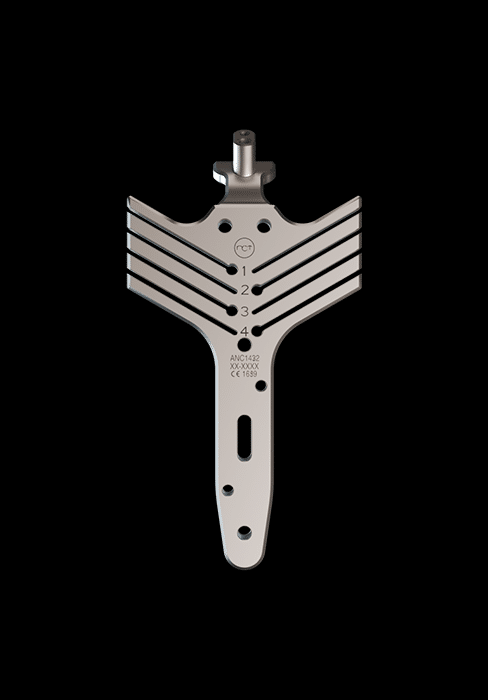
A specific cutting guide designed to perform the osteotomies required for an olecranon osteotomy approach.





Key features of the Alians Elbow S range?
- A comprehensive range dedicated to the fixation of simple and complex fractures, as well as elbow osteotomies
- Anatomically contoured plates designed to respect joint structure
- A selection of plates adapted to various surgical philosophies and allowing for different types of configurations (Y, 90°, 180°)
- A patented polyaxial locking system, Dualtec System®, to reach bone fragments from different angles and avoid conflicts with screws from other plates
- Dedicated instrumentation to guide the transolecranon approach
The ONE Platform.
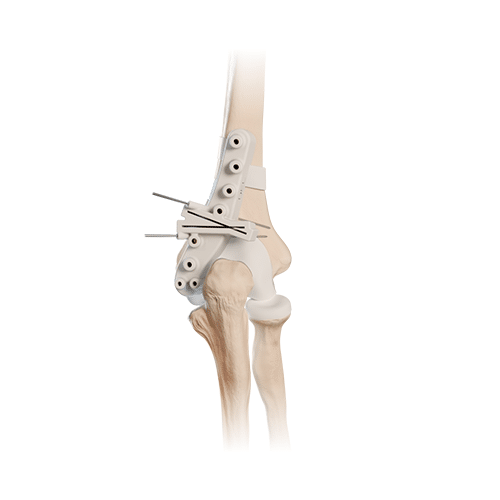
ONE is the patient-specific correction guide solution designed to assist you in the 2D and 3D planning of your surgeries, as well as in performing your osteotomies. The manufacturing of our patient-specific cutting guides is the result of close collaboration between surgeons and Newclip Technics, to best meet surgical needs and support the surgeon throughout every step. These solutions are developed based on clinical imaging data to optimize anatomical congruence between the implant and bone tissue.
Learn more